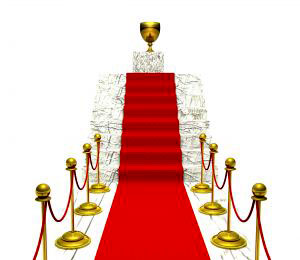 Many moons ago I wrote a blog about the dangers of multi-tasking – how it robs us of our creativity, makes us less efficient, and raises our stress levels. At the time, the business world was starting to recognize that the constant digital interruptions from email, cell phones and social media were not simplifying life as expected. Instead, they were making it harder to focus on their jobs and get things done.
Many moons ago I wrote a blog about the dangers of multi-tasking – how it robs us of our creativity, makes us less efficient, and raises our stress levels. At the time, the business world was starting to recognize that the constant digital interruptions from email, cell phones and social media were not simplifying life as expected. Instead, they were making it harder to focus on their jobs and get things done.
Well, guess what? Nothing has changed. In fact, it’s gotten worse.
According to a survey by Rescuetime.com, a maker of time management software, 98% of respondents said they get interrupted at least a few times a day. More than half
(51%) said they frequently get interrupted.
Here’s where it gets interesting.
The survey also found that it’s not just digital interruptions that are interfering with focus and productivity. For 64%, face-to-face distractions represented their most common interruption. More than half (51%) rated face-to-face interruptions as the most urgent and hardest to ignore.
How are people responding to the daily onslaught of interruptions?
Almost half (48.5) of the respondents said they wear headphones to signal they don’t want to be interrupted. Nearly a third choose to physically separate themselves by closing their door or working in a meeting room. (See my blog about “Interrupt Your Interruptions” for more on this.)
What does all this distraction cost in terms of lost time and concentration? Hold onto your hats because interruptions cause more harm than you might think.
According to a study conducted by the UC Irvine Department of Informatics, it takes an average of about 25 minutes to return to your original task after an interruption. So the lost time doesn’t occur only for the length of the interruption; it also includes the time to refocus on the task at hand.
Based on surveys like this one and other research, here’s what our current work world looks like:
- Access to data has exploded
- Distractions have increased
- The possibility of instant connection looms constantly
- It takes a lot longer to refocus than we think
- Multitasking is not the solution (and is not even possible in the adult brain)
So what do we do?
Solo-Tasking: The New Approach to Work
Originally, I recommend these steps for recapturing our time, attention and productivity in the face of constant interruptions:
- Have a clear definition of what winning looks like for your organization. Then stage your field of vision by keeping your goals and objectives in front of you throughout the day. Use the power of visual prompts to constantly refocus yourself and others.
- Stop trying to know it all. We can’t possibly stay current with everything going on in our businesses, markets and industries, so it’s okay to know a little about a lot of things. We need to restrict our in-depth information gathering and analysis to the areas where we have the most impact.
- Schedule alone time. This is hard for business leaders, but it needs to be done. Alone time allows us to slow down and refocus on the high-level activities that move us closer to our strategic goals.
- Manage your information/interruption flow. Develop a system and structure for managing the tidal wave of information that comes to you each day. This includes taking control of your email inbox and setting boundaries for when and how people can interrupt you.
Now I think we need to take it a step further by practicing a new way of working that embraces mindful and dedicated “solo-tasking.” It starts with tossing out the idea of multi-tasking altogether. Why? Because the multitasking culture promoted by the media is a mirage. It’s inaccurate and self-destructive.
When we think we are multi-tasking, we aren’t actually doing several things at once. Instead, we’re just switching between thinking tasks. And we’re paying a high price for the switch time that is wasted.
Solo-tasking involves mitigating distractions by creating more personal space for ourselves. This can include:
- Creating interruption-free work zones
- Providing work pods – small, free-standing soundproof spaces that can comfortably hold one or two people
- Scheduling self-meetings to block out uninterrupted time
- Setting ‘office hours’ when people know it’s okay to interrupt
- Setting aside a block of time each week where no emails are sent internally
- Providing quiet rooms where employees can meditate or focus intensely for short periods of time
- Scheduling certain times during the day to respond to emails and other interruptions
Most of all, set up boundaries to protect your focus time. Place simple visuals outside your cube wall or office door that say, “Please come back in 30 minutes, I’m focused on a project.” Or, “Please schedule time with me, I’m currently in an important meeting.”
It also helps to keep a distraction log. Write down the time, date and length of each distraction, what it was about, and whether it was valid and/or urgent. After a week or two, review the log to see which kinds of interruptions are wasting your time and which are worthwhile. Do certain people interrupt a lot more than others? Can some interruptions can be handled by someone else? Do you need to change certain work habits to minimize the distractions?
Winning in business requires focus. Giving everyone in the organization more time to solo-task will boost creativity and productivity and help them stay focused on your vision of winning.








